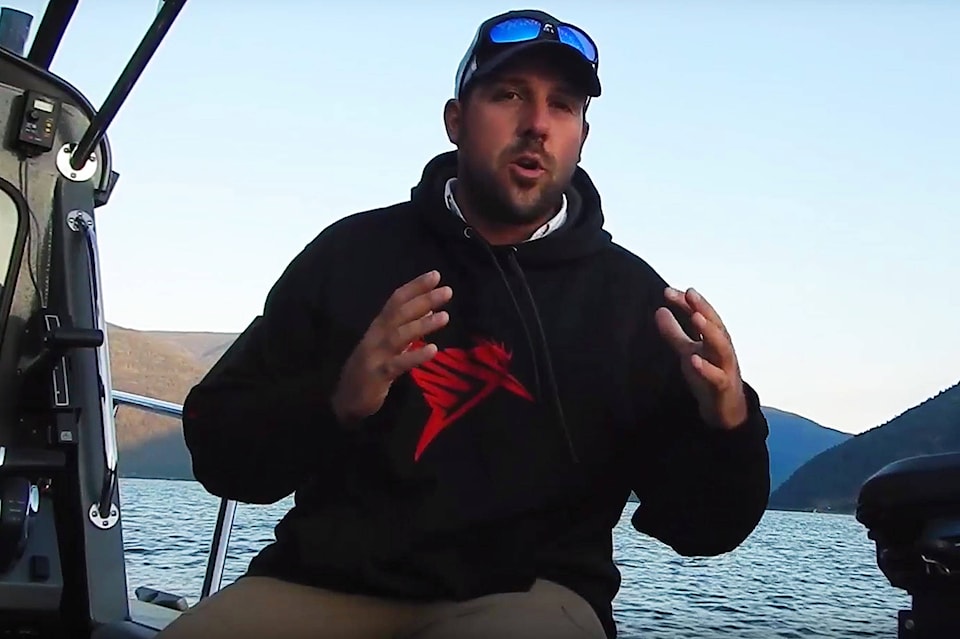They are a species that the Shuswap region is known for, but in some areas of the lake and the rivers and streams that flow into it their populations have becomes so fragile that their survival hangs in the balance. To make things worse for the salmon, which spawn in the Shuswap watershed, regulations to protect them from fishermen are being routinely ignored, frustrating an expert on the local fish stocks.
Jason Bellows, who owns both Bucktail Adventures, a fishing guide service, and Westside Stores, a sporting goods retailer in Salmon Arm, says in spite of regulations prohibiting it, salmon on their way to spawn are routinely targeted in Shuswap and Mara lakes.
Bellows produced a video in hopes of reminding people of the regulations regarding Salmon on the lake.
“Never ever at any time can you target salmon on this lake. You are not allowed to catch and release them, you are not allowed to catch and keep one ever out here,” he says in the video.
Bellows said he sees people buying lots of gear specific used for salmon fishing in his store, he said while the use of the gear itself is not against the regulations, the 11’ flasher and hoochie setup that he sees used on the lake are what he uses when legally targeting salmon on Little Shuswap Lake.
“It is not common trout gear, it is typical salmon gear, and like I said in the video who wants to fight a four-pound rainbow (trout) with that big flasher. It’s not sport fishing.”
Related: Yard Creek salmon run without salmon
The locations people are choosing to fish is also a problem.
“There’s 341 kilometres of shoreline and there’s certain spots that if you hang around and play around you’re going to hook a lot more salmon than if you don’t go there,” Bellows said
He said he frequently sees people fishing the mouths of the Sicamous Channel and the mouth of the Eagle River where salmon known to hold before making their way closer to their spawning grounds.
Even if people are catching and releasing salmon, a portion of the fish will die. The salmon are genetically imprinted to return to the rivers they were born in after living most of their lives in the ocean so they can spawn. Bellows said by the time the fish have made the long journey from the pacific ocean, they only have enough energy to make it to their spawning grounds before dying. Fighting to free themselves from a hook can often cause them to die of exhaustion.
Bellows said he hopes people see what even catch and release fishing is doing to the fragile salmon runs in the rivers and streams which feed into Shuswap Lake and Mara Lake.
“Think of your kids it’s about the future its about our fish stocks. Nobody can tell me that our salmon are in good shape on the West Coast. I mean it’s horrendous,” he said.
Even when fishermen are not deliberately targeting salmon, hooking one is a possibility. Bellows said if this happens it is best not to net the fish but to just bring it to the side of the boat and remove the hook, leaving the fish in the water. He stressed that when releasing any fish it is important to wet your hands before touching them in order to preserve the layer of slime which protects them from bacteria. It is also important to avoid touching the gills, as the oil in people’s hands can break their gills down.
Bellows said that despite the regulations and the presence of fisheries and conservation officers, the message to stop targeting salmon is not getting through to people.
“It’s just very frustrating to me, people still just don’t get this. We explain it so much in the store, out here on the lake I have that talk about the ethics of this and everything. Man it just is not getting into people’s heads,” he said.
@SalmonArm
jim.elliot@saobserver.net
Like us on Facebook and follow us on Twitter
